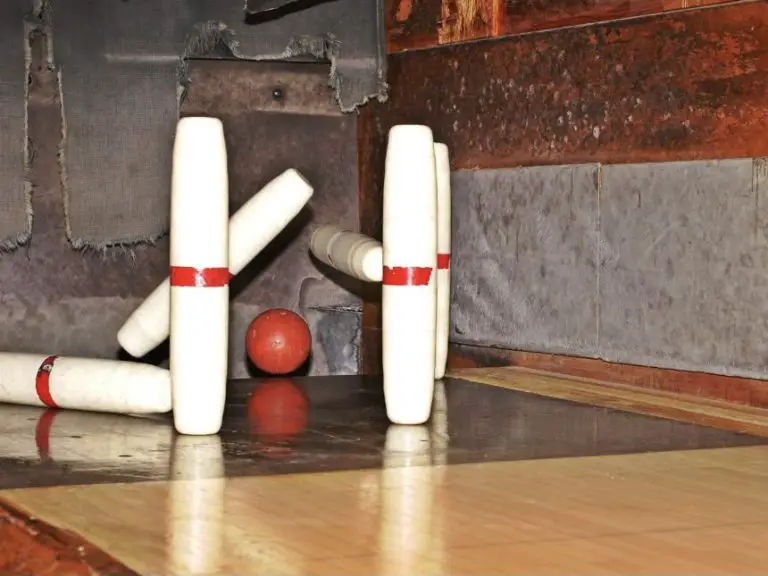How Candlepin Bowling Originated
Origins of Candlepin Bowling
If you’re a fan of bowling, you may have heard of Candlepin Bowling, a unique variation of the game that originated in Massachusetts. Here’s a brief history of how Candlepin Bowling got started.
Early History in Massachusetts
Candlepin Bowling was invented in 1880 by Justin White, a bowling alley owner in Worcester, Massachusetts, according to Very Local. The game quickly became popular in the New England area, where it is still played today.
Justin White’s Contribution
Justin White’s contribution to the world of bowling didn’t stop at inventing Candlepin Bowling. He also helped standardize the game, according to Candlepin.org. In the early 20th century, White worked with other bowling enthusiasts to create a set of rules and regulations for the game, which helped it become more popular and widespread.
Today, Candlepin Bowling is still played in Massachusetts and other parts of New England, and is enjoyed by people of all ages. Its unique rules and challenging gameplay make it a fun and exciting variation of the classic game of bowling.
That’s a brief history of how Candlepin Bowling got started. Now that you know a little more about the game’s origins, you can appreciate it even more the next time you hit the lanes.
Candlepin Bowling Equipment and Rules
Distinctive Features of Candlepin
Candlepin bowling is a unique form of bowling that has some distinctive features that make it different from other types of bowling. One of the most notable differences is the size and shape of the pins. Candlepin bowling uses ten pins that are thinner, taller, and don’t have a bottom weight. Because of this, they bounce more when hit. The pins are arranged in a triangular shape, with the front pin located at the center of the triangle.
Another unique feature of candlepin bowling is the ball. The candlepin bowling ball is smaller and lighter than the traditional bowling ball. It weighs between 1.1 kg (2.5 lbs) and 1.3 kg (3 lbs) and has a diameter of 4.5 inches. The ball is cylindrical in shape and tapers towards the ends. The ball also has no finger holes, which makes it more difficult to control and grip.
Rules and Scoring System
Candlepin bowling has a unique set of rules and a scoring system that differs from traditional bowling. In candlepin bowling, each player gets three rolls per frame instead of two. The pins are not reset after each roll, so the pins that remain standing after the first roll stay in place for the second and third rolls.
The scoring system in candlepin bowling is also different from traditional bowling. In candlepin bowling, the pins are scored based on the number of pins knocked down. Each pin knocked down is worth one point. If a player knocks down all ten pins with their three rolls, they get a bonus of two extra rolls, which can result in a maximum score of 30 points for that frame.
In conclusion, candlepin bowling is a unique and challenging form of bowling that requires skill, precision, and strategy. The distinctive features of candlepin, such as the size and shape of the pins and the ball, make it a challenging game for even the most experienced bowlers. The rules and scoring system of candlepin bowling are also different from traditional bowling, which adds to the excitement and challenge of the game.
Candlepin Bowling Leagues and Organizations
Candlepin bowling has been played in various leagues and organizations since its inception. One of the earliest organizations was the National Duckpin and Candlepin Congress, which was established in 1906 by John J. Monsey. This organization helped to create leagues in the greater Worcester area and regulate the size, shape, and weight of the pins and balls. The National Duckpin and Candlepin Congress set the stage for candlepin bowling leagues and tournaments around New England.
Another organization that has played a significant role in the development of candlepin bowling is the International Candlepin Bowling Association (ICBA). The ICBA was founded in 1969 and is the governing body for candlepin bowling worldwide. The ICBA sanctions scores, maintains records, and promotes the sport through various events and tournaments. According to their website, the ICBA is “dedicated to the promotion of candlepin bowling as a sport, and to the establishment of rules and regulations for the conduct of the game.”
The ICBA has also established the World Candlepin Bowling Council, which is responsible for organizing international tournaments and promoting candlepin bowling on a global scale.
Candlepin bowling leagues have been established throughout the United States and Canada, with many local and regional leagues operating independently. These leagues offer a variety of formats and rules, allowing players of all skill levels to participate.
The Candlepin Bowling Hall of Fame, located in Massachusetts, honors players, coaches, and others who have made significant contributions to the sport. The Hall of Fame features exhibits and artifacts related to candlepin bowling history and hosts events and tournaments throughout the year.
Overall, the formation of leagues and organizations has played an important role in the growth and development of candlepin bowling. These organizations have helped to establish rules and regulations, promote the sport, and provide opportunities for players to compete and improve their skills.
Candlepin Bowling’s Regional Popularity
Candlepin bowling is a unique sport that has been enjoyed in certain regions of the United States and Canada for over a century. While it has not gained widespread popularity outside of these areas, it remains a beloved pastime for many. Let’s take a closer look at the regional popularity of candlepin bowling.
New England’s Candlepin Culture
Candlepin bowling is most commonly associated with the New England region of the United States, particularly Massachusetts, where it originated in the late 1800s. The sport quickly spread throughout the region and became a beloved pastime for many. Today, there are numerous candlepin bowling alleys throughout New England, and the sport remains a fixture of the local culture.
The Maritimes and Beyond
While candlepin bowling is most commonly associated with New England, it has also gained a following in the Canadian Maritimes, particularly in Nova Scotia and New Brunswick. The sport has also been played in other regions of the United States, including Maine and parts of New Hampshire.
Despite its regional popularity, candlepin bowling has not gained widespread recognition outside of these areas. However, for those who have grown up with the sport, it remains a cherished part of their local culture and a fun way to spend time with friends and family.
Overall, candlepin bowling’s regional popularity can be attributed to its unique and challenging gameplay, as well as its place in the cultural history of the regions where it is played. If you’re ever in New England or the Maritimes, be sure to check out a candlepin bowling alley and experience this fun and challenging sport for yourself!
Modern Candlepin Bowling
Candlepin bowling has come a long way since its inception in Worcester, Massachusetts in the late 1800s. Today, modern candlepin bowling has evolved to include technological advancements, and has even been featured in popular media.
Technological Advancements
One of the most significant advancements in modern candlepin bowling is the automatic candlepin pinsetter. This technology has revolutionized the sport, making it easier and more efficient to set up the pins after each frame. The automatic pinsetter was invented by Don Gillis in 1945 and has since become a staple in candlepin alleys across the country.
Another significant advancement in modern candlepin bowling is the introduction of Bowl-Mor, a company that specializes in bowling equipment. Bowl-Mor has been instrumental in developing new technologies that have improved the sport, including the Big Ball Bowling system. This system uses larger balls to make it easier for beginners to get started in the sport.
Candlepin in the Media
Candlepin bowling has also gained popularity in the media in recent years. In 2020, during the COVID-19 pandemic, Chris Sargent, a candlepin bowler from Massachusetts, set a world record for the most strikes in a row (40) while bowling alone in his basement. The feat was covered by media outlets such as the Worcester Telegram, bringing attention to the sport.
In addition, candlepin bowling has been featured in popular television shows such as “The Simpsons” and “Family Guy,” further increasing its exposure to a wider audience.
Overall, modern candlepin bowling has come a long way since its humble beginnings in Worcester. With technological advancements and increased media exposure, the sport continues to grow and evolve, attracting new players and fans alike.


